Last Updated on February 2, 2024
For most of us, the Planet of the Apes movies have always been around. Spanning five decades and ten movies – and counting – it’s hard to imagine a world without that race of hyper-intelligent monkeys and their everlasting war against man. We take this extended universe for granted, but it wasn’t always this way. It’s probably not hard to believe that at one time, the concept of a world populated by talking apes wasn’t thought of as a box office draw, and if it hadn’t been for the determination of a handful of true believers in the material, we may never have gotten one movie, let alone an entire franchise. So let’s go back in time a bit to a world without Dr. Zaius and the gang and find out WTF Happened to Planet of the Apes?
We’re going back as far as 1963, when French author Pierre Boulle released his novel “Monkey Planet.” In the book, a couple of men travel to a distant world where they encounter a race of civilized apes who dress, talk and behave just like humans. It was a thoughtful and compelling science-fiction novel, supposedly inspired by an incident at a zoo when the author found himself compelled by an apes’ surprisingly humanlike actions.
A press agent turned producer named Arthur Jacobs got ahold of the novel before its publication in 1963 and saw potential for a feature film. Jacobs pitched the project all over town but couldn’t get any studios to bite on it – naturally, the idea of a movie where apes walked and talked seemed a bit ridiculous to most of the majors in town. To help sell the concept, Jacobs commissioned dozens of sketches which helped provide visuals for the skeptics. Ironically, one of the skeptics was author Pierre Boulle himself, who never envisioned a film when writing “Monkey Planet” despite the many images the title alone evokes in one’s mind.
Obviously, a screenplay was needed if the project was ever going to be taken seriously by a studio, so Jacobs enlisted Rod Serling, the genius behind The Twilight Zone to translate Boulle’s work into a script. Serling worked very hard for well over a year on the screenplay, allegedly writing over 30 drafts until he could go no further on it. Serling kept most of Boulle’s ideas intact, save for one ingenious concept of his own: in the book, the monkey planet of the title is indeed another planet millions of lightyears from Earth; it was Serling’s pitch to reveal that the entire story – and here’s a spoiler if you’re one of a handful of people who’ve been living under a rock the last few decades – has been taking place on Earth all along. Ever the realist about man’s capacity for war, Serling had it so that the human civilization has finally killed itself off with an atomic bomb, leaving the apes to take over as the dominant species over the span of hundreds of years.
At one point, Jacobs got a studio to bite, Warner Bros, but they eventually got cold feet because they thought the movie would cost at least $10 million to produce, a very costly sum back in those days. After Warners dropped it, Arthur Jacobs found himself back to square one. Harkening back to his press agent days, the producer thought to package the script with a star, which would make the project more appealing to a tentative studio. Jacobs sent the book, screenplay and over a hundred sketches to Charlton Heston, then one of the most famous actors on the planet. Heston was won over by the vision Jacobs had delivered and agreed to be a part of it. Now, Jacobs had himself a project he could sell. Even more beneficial to his cause would be bringing a director on board, and Heston suggested Franklin J. Schaffner, with whom he’d just made a historical epic called The War Lord. Schaffner saw potential in the idea, but agreed the budget was going to be too big for a studio to take on. With a new writer, Michael Wilson – who’d written Oscar-winning films like Bridge on the River Kwai and Lawrence of Arabia while he was blacklisted – Schaffner reimagined Boulle’s original vision and made the ape planet more primitive. Instead of apes driving cars and living in apartment buildings, they’d ride horses and live in caves. This would cut costs considerably while still keeping the heart of the story intact.
Jacobs had just produced a couple of films for 20th Century Fox and brought this new vision for Planet of the Apes to studio head Richard Zanuck, who was intrigued but, of course, not 100% sold on the concept. Zanuck wanted to see proof that the apes wouldn’t look ridiculous and more than that, that actors would be able to perform their roles while covered with elaborate make-up.
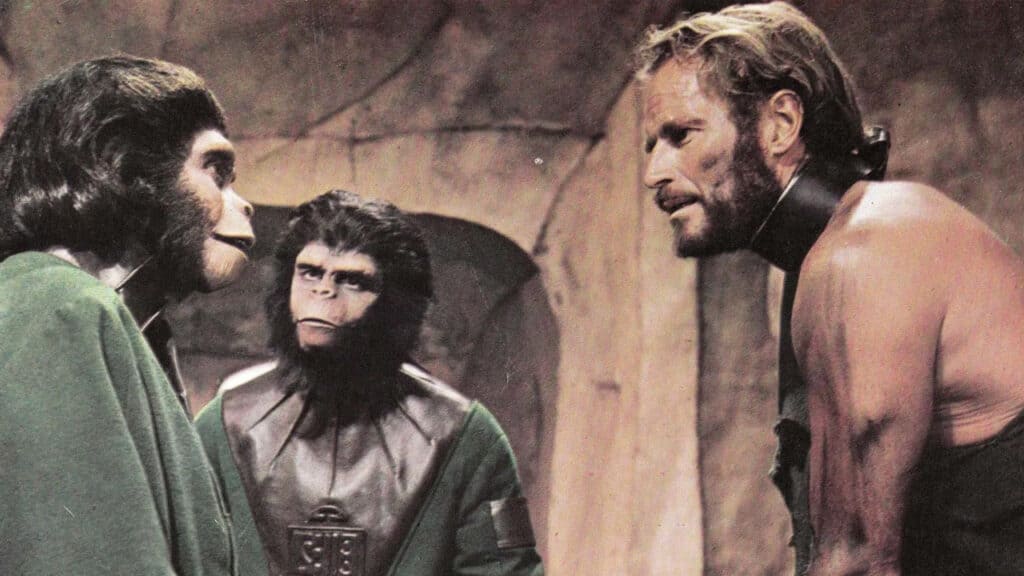
Using script pages from one of Rod Serling’s drafts, Schaffner and Jacobs shot footage with Charlton Heston as the lead human, Taylor, along with movie legend Edward G. Robinson as Dr. Zaius and a young James Brolin as one of the apes. Model Linda Harrison, then Richard Zanuck’s mistress, was also featured as an ape, although ultimately she would play Taylor’s love interest Nova.
The make-up was done by John Chambers, who during World War II would make prosthetic limbs and facial restorations for wounded and disfigured soldiers. Using the same concepts he’d engineered for survivors of the war, Chambers brought his talents to Hollywood to become one of the town’s most in-demand special make-up designers. For instance, he was the man who designed Mr Spock’s ears in Star Trek, among many other notable credits.
Once Zanuck saw the screen test, he gave Planet of the Apes the greenlight, three years after Arthur Jacobs had first brought the book to the studios. The film was given a budget of $5.8 million, with a million of that going toward Chambers’ make-up department. The production utilized somewhere in the neighborhood of 80 crew members to work in various costume, art and make-up departments; supposedly there were so many people working on “Planet of the Apes” that several other Hollywood productions were delayed until the crew was freed up.
Making things even more difficult was the fact Fox slashed the shooting schedule by ten days only a few weeks before production, obviously lending the already-difficult production an even greater sense of urgency.
Director Franklin Schaffner was committed to populating his movie with veteran actors. The role of Zira was offered to the legendary Ingrid Bergman, but she turned it down. Years later, her daughter Isabella Rosselini would reveal turning down Planet of the Apes was one of the biggest regrets of her mother’s career. Edward G. Robinson, who had prepared to play Dr. Zauis, unfortunately became too sick to take the role full time, so his part went to Maurice Evans, perhaps best known at the time for his role in hit sitcom Bewitched, took on the part instead.
The role of sympathetic scientist Cornelius was offered directly to English-born actor Roddy McDowell, while Cornelius’ wife Zira was to be played by Kim Hunter, an Oscar-winner for A Streetcar Named Desire. As mentioned, Linda Harrison would play primitive human Nova, but sexy stars such as Raquel Welsh and Ursula Andress were offered the role first.
The actor playing the apes were in for a bit more than they bargained for when production commenced in May of 1967. Initially, putting the make-up on took up to six hours, but on a good day it would only take three. Obviously, it was hot during the summer in California, and wearing the make-up made things even more uncomfortable. The actors found they had to overact with their facial expressions to give emotion to their characters, and they had to keep their faces moving constantly so that the make-up appliances wouldn’t stiffen up too much. Worst of all, they could not take the make-up off until filming for the day was finished, meaning they had to eat – or drink – most of their meals through straws. As many of the actors were smokers, cigarette holders were necessary to indulge their habit.
Actress Kim Hunter seemed to have had the worst time with the make-up; she felt it was claustrophobic to the point where she needed to take valium every day before it was applied to her face. She eventually stopped eating altogether during the shooting hours, obviously resulting in a very stressful shoot.
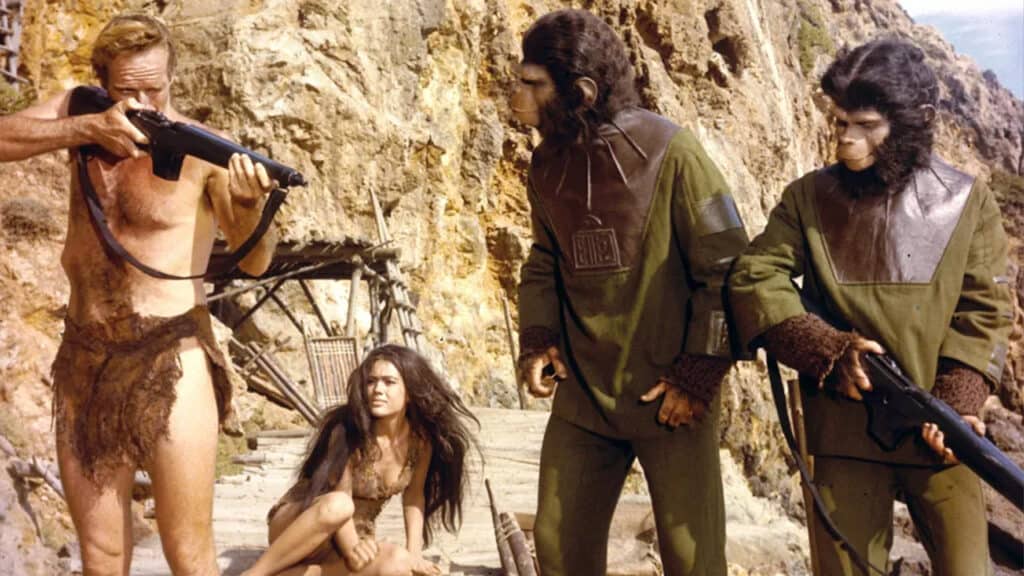
Though he wasn’t in heavy make-up, Heston didn’t have it much easier. In stark contrast to the noble and heroic characters he was known for, Ben-Hur and Moses just to name the most famous, Taylor was constantly being beaten down by his oppressors. The character is often semi or fully nude, meaning the hot summer sun was always at the actor’s back, and he had to wear rubber booties on his feet to keep them from getting too bruised during Taylor’s many running scenes. Adding more misery was that Heston had the flu for most of the shoot; there was a thought to delay shooting for a while but Schaffner thought Heston’s bedraggled state would add to the character’s torture. When Taylor screams his immortal line “take your stinking paws off me you damn dirty ape,” Heston’s voice was genuinely raspy from his illness. Getting sprayed with a fire hose made his poor condition even worse. But, one has to admit, the actor was a hell of a trooper and gave a terrific performance.
The first scenes shot for the film were the early sequences which see Taylor and fellow astronauts crash land in this strange new world. These scenes were shot in Utah, and as it was well over a hundred degrees every day, members from both cast and crew were passing out regularly; even Schaffner supposedly hit the deck one afternoon.
The bulk of the film was shot on Fox’s Malibu Ranch set; the architecture for the ape city was inspired by the Turkish region of Cappadocia, famous for its unique rock formations. A strange ritual seemed to happen amongst the actors during shooting: much like in the film, the three separate species of apes would segregate themselves into their own groups. Meaning the chimps would hang out with other chimps, orangoutangs would stick with other orangoutangs, and gorillas would only eat with other gorillas. Most of the actors probably didn’t even realize they were doing this, although Kim Hunter said she intentionally didn’t spend any time with the orangoutangs, because in the world of the movie that’s how the class system was divided.
We can’t talk about Planet of the Apes without discussing its climax, among the most famous in film history. Though there were several possible endings scripted, the producers stuck with one Rod Serling came up with, that Taylor would learn he’s actually on Earth after seeing the destroyed remains of the Statue of Liberty. Shot on Zuma Beach in Malibu, the ending was only revealed to a specific amount to members of cast and crew; it was left out of the majority of the scripts because 20th Century Fox didn’t want the surprise leaking out.
While the final image in the film, where you see half of Lady Liberty in all her glory, is the work of a matte painting, the tease of the statue was actually built some 70 feet above the beach. The head and the torch were constructed out of paper mache and set above the large scaffold, where the camera could move past them and cheat the actual size. Film history done simply, although the story goes that it was difficult getting anyone to actually climb the towering structure.
Production on Planet of the Apes wrapped in August 1967, having lasted three very hot months. Supposedly, the subsequent sequels to the film were all shot during the fall and winter months, the producers having learned their lesson after suffering through the stifling summer production.
When it was released in April of 1968, the movie was an immediate hit, and ultimately grossed a very impressive $32 million in the U.S., quite a profit considering its $5 million budget. Planet of the Apes was nominated for two Oscars, Best Costume Design and Best Score, and won a special award for John Chambers’ splendid make-up.
Naturally, a sequel was quickly planned, and two years after the original, Beneath the Planet of the Apes was released. Three more sequels followed for three consecutive years, though the budgets, and profits, were inevitably shrinking. In 1974, a Planet of the Apes TV show premiered on CBS, though it wasn’t a success and ended after only 14 episodes. That was followed by an animated series in 1975 called Return to the Planet of the Apes, although that too lasted only a short while. It seemed like the apes were finally ready to go extinct.
Of course, we know they wouldn’t stay dead for long. After years of false starts, a remake of the classic film was directed by Tim Burton and released in July of 2001. While that was a nonstarter, a reboot series of films would come out starting in 2011 with Rise of the Planet of the Apes, which would successfully reignite the public’s fascination with the franchise. Later this year, another reboot of the franchise, Kingdom of the Planet of the Apes is coming out.
Still, many believe the one that started it all has yet to be topped. With its mix of social commentary and rousing action, suspense and drama, it’s a unique picture unlike any that came before it. What started as a far-out idea that had plenty of doubters has become one of the most iconic brands in cinema (it’s also the favorite movie of the iconic Eddie Murphy) . Seems as though this particular monkey business is very good business indeed.


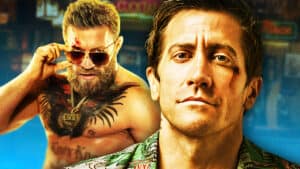

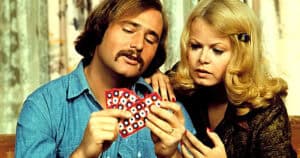
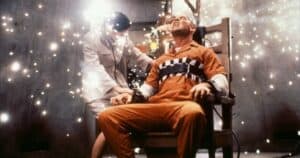
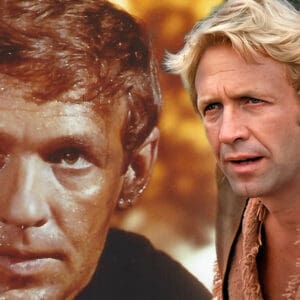
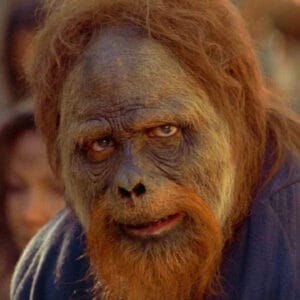
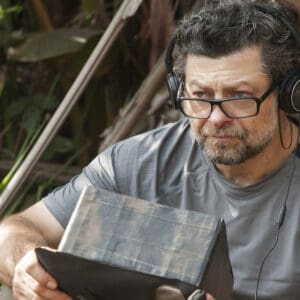
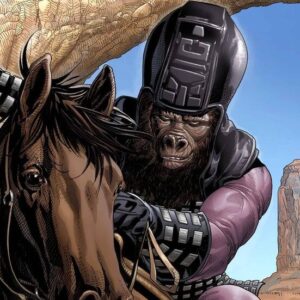
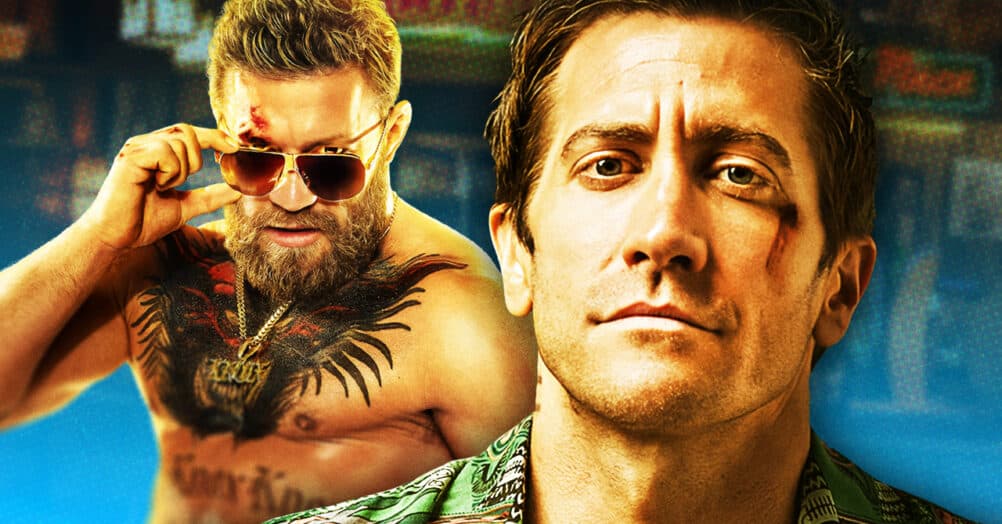
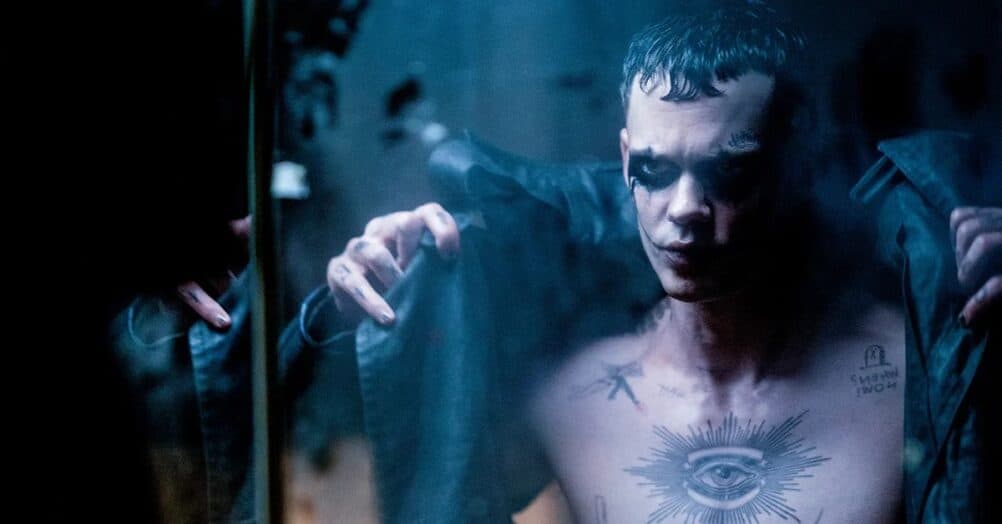

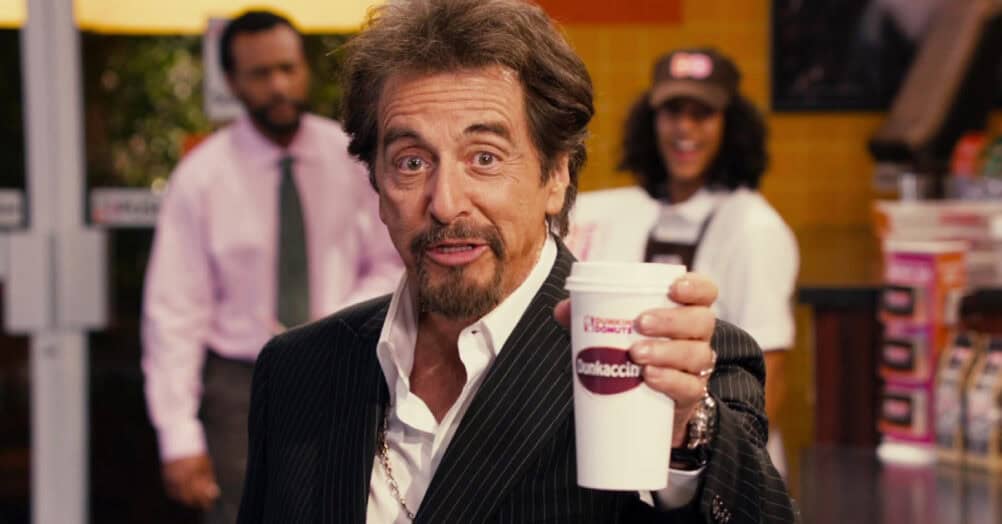
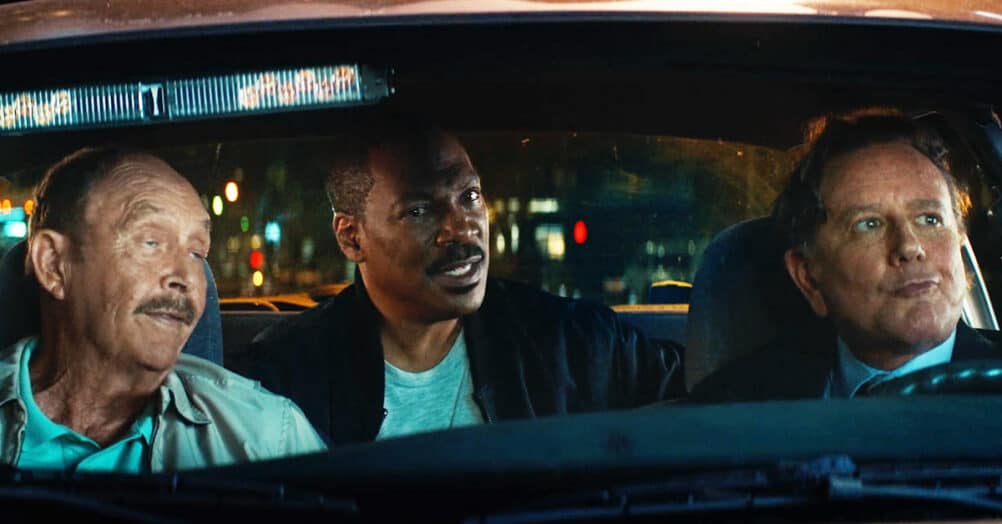

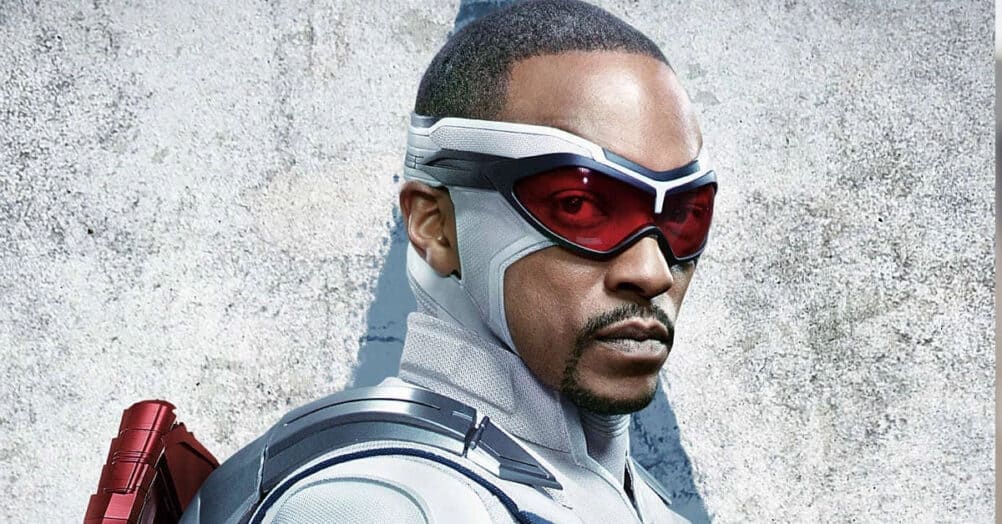
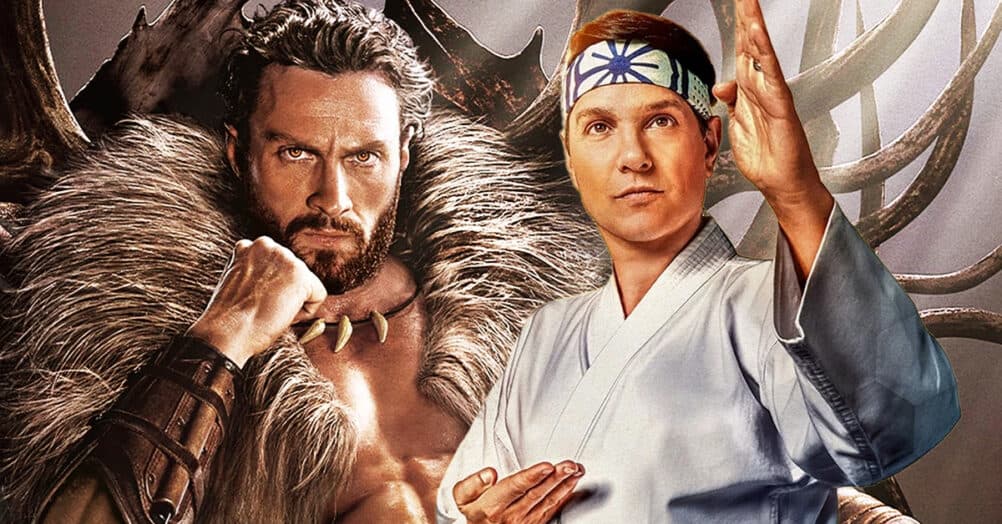

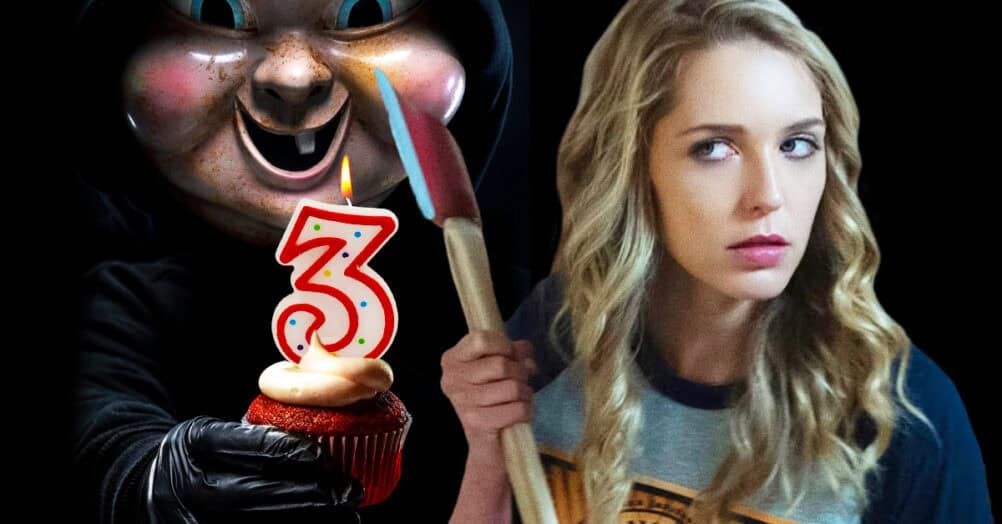
Follow the JOBLO MOVIE NETWORK
Follow us on YOUTUBE
Follow ARROW IN THE HEAD
Follow AITH on YOUTUBE